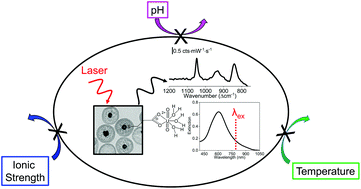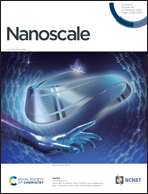Microporous silica membranes promote plasmonic nanoparticle stability for SERS detection of uranyl
Abstract
Silica membrane stabilized gold coated silver (Ag@Au) (i.e., internally etched silica coated Ag@Au (IE Ag@Au@SiO2)) nanoparticles promote surface-enhanced Raman scattering (SERS) activity and detection of uranium(VI) oxide (uranyl) under harsh solution phase conditions including at pH 3–7, with ionic strengths up to 150 mM, and temperatures up to 37 °C for at least 10 hours. These materials overcome traditional solution-phase plasmonic nanomaterial limitations including signal variability and/or degradation arising from nanoparticle aggregation, dissolution, and/or surface chemistry changes. Quantitative uranyl detection occurs via coordination to 3-mercaptopropionate (MPA), a result confirmed through changes in correlated SERS intensities for uranyl and COOH/COO− vibrational modes. Quantification is demonstrated down to 110 nM, a concentration below toxic levels. As pH varies from 3 to 7, the plasmonic properties of the nanoparticles are unchanged, and the uranyl signal depends on both the protonation state of MPA as well as uranyl solubility. High ionic strengths (up to 150 mM) and incubation at 37 °C for at least 10 hours do not impact the SERS activity of uranyl even though slight silica dissolution is observed during thermal treatment. All in all, microporous silica membranes effectively protect the nanoparticles against variations in solution conditions thus illustrating robust tunability for uranyl detection using SERS.

- This article is part of the themed collection: Advances in Plasmonics and Its Applications


 Please wait while we load your content...
Please wait while we load your content...